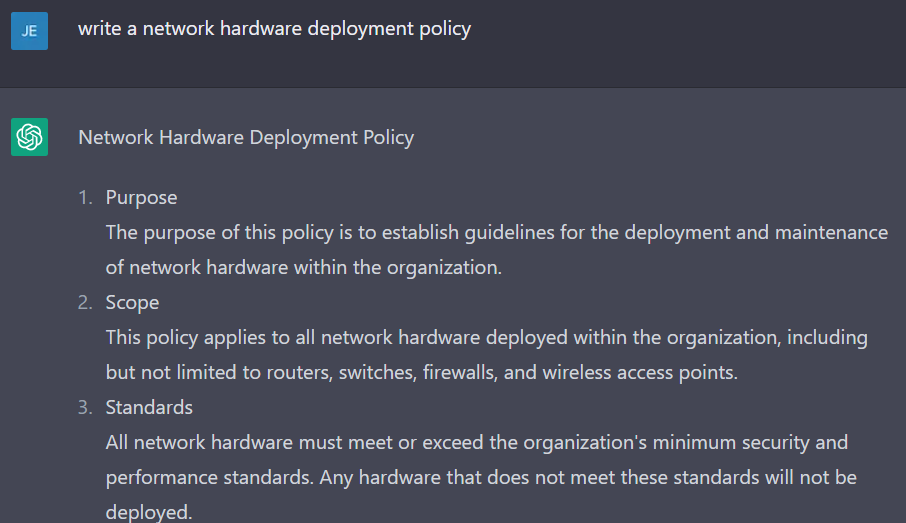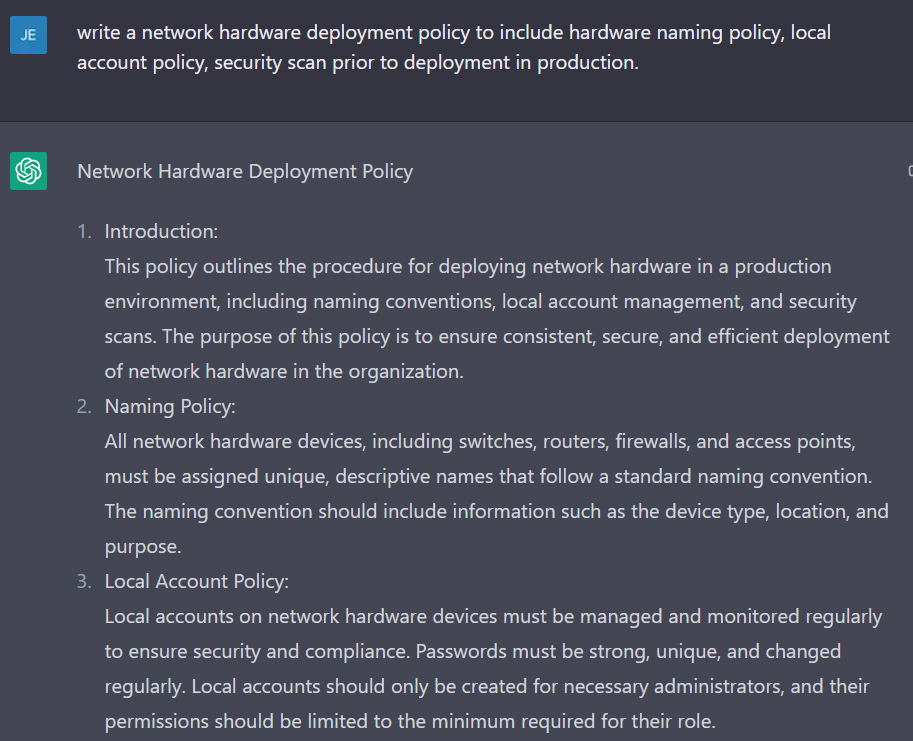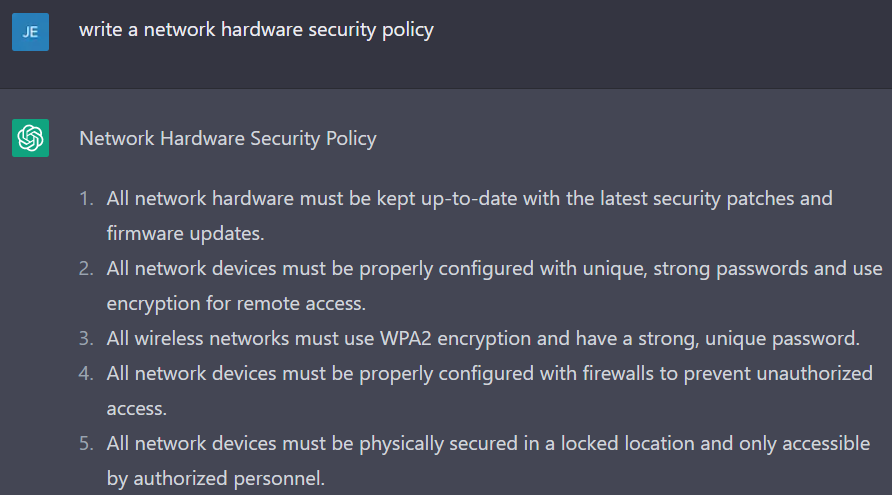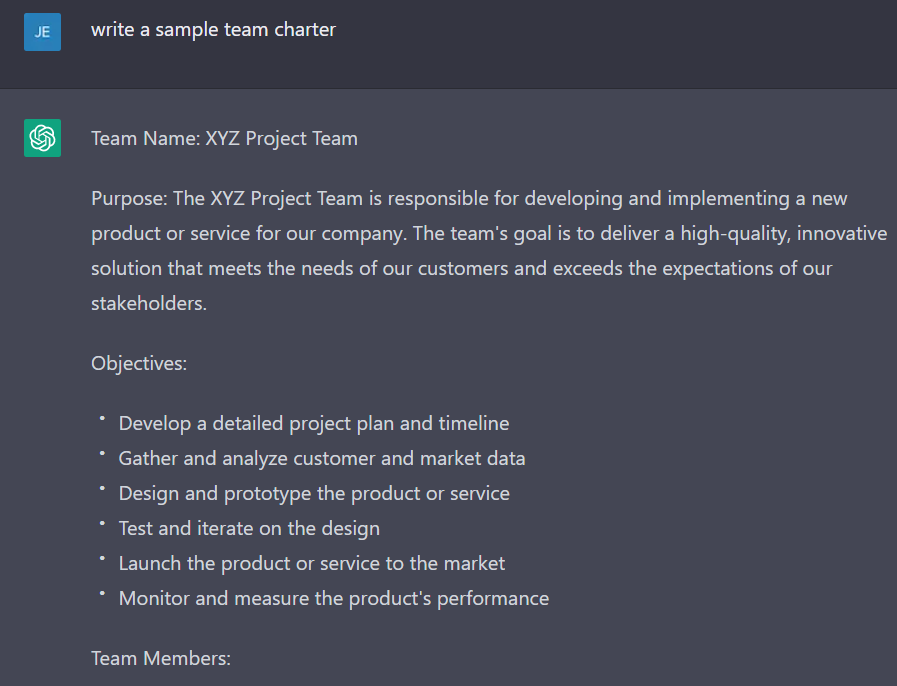Last updated on February 10th, 2023 at 08:49 am
This post is the third part of a series, so click here for Part 1 and Part 2. In this article, I review using ChatGPT for creating network documentation.
The goal of this article is not to describe ChatGPT but provide my experience as a Network Engineer using ChatGPT. If you want to know more about it, visit these two links. Wikipedia ChatGPT and OpenAI ChatGPT FAQ. Also, this is a multipart article.
In Part 1, I used ChatGPT to ask what is ARPANET, IP Subnetting, Cisco Interface Best Practices, Wireshark, NMAP, and a Python Script. Part 2, I used it for Palo Alto Networks CLI commands, BGP configurations, and using Python to resolve IP addresses in an Excel document.
In this article, we will review ChatGPT with the following:
The documents I asked ChatGPT to create are common and ones I have created, co-created, or updated multiple times in my career. I chose these based on my experience with these documents and how important or popular they are. Sometimes, they are needed for compliance purposes.
Keep this in Mind!
One thing I noticed is it’s not perfect. It will correct itself, especially when you call it out on a mistake, though I expect this to improve over time. Also, how the initial or follow-up question or request is phrased does affect the response/output.
Often, what is provided is a start, baseline, or template, but it is also based on the question(s) or information provided to ChatGPT. The output generated for all three subjects was a baseline but a good start. The result was based on what was asked, but I found out that when I asked again or asked the same request but on a different day, the result was different and usually included more detail.
Let’s Get Into ChatGPT
Network Hardware Deployment Policy
ChatGPT offers a powerful and flexible tool for organizations looking to streamline their network hardware deployment. By using ChatGPT to generate these policies, organizations can ensure that their networks are secure, efficient, and well-maintained and that their teams are aligned and working together effectively. Whether you’re a network administrator, a security professional, or a team leader, ChatGPT can help you achieve your goals and drive your organization forward.
I asked ChatGPT four times to create a Network Deployment Policy. The first three improved on themselves, and for the fourth, I asked to include additional detail. I will provide partial screenshots of the requests but not complete ones.
Here is the first request, and it has a slim output but a good start.

With the second request, there is an improvement in quantity, content, and format.

The third is still good, but the format changes a little, and the content is still acceptable.

For the fourth request, I was more specific about what I wanted to be included. The content is good, but the output focused only on those specific items.

Network Hardware Security Policy
In a similar manner, ChatGPT can be used to create network hardware security policies. By providing ChatGPT with information about the organization’s security needs and requirements, the language model can generate a comprehensive security policy that outlines measures such as firewalls, encryption, user authentication, and regular security audits. These policies help ensure that sensitive data is protected and prevent unauthorized access to the network.
Like the first Network Hardware Deployment Policy, the first Network Hardware Security Policy output is slim. The content is good but only good as a baseline or starting point.

Like many of the others, the second request is a lot better in terms of content and format.

Team Charter
In addition to hardware deployment and security policies, ChatGPT can also be used to create team charters. A team charter outlines the purpose, goals, and responsibilities of a team and helps ensure that all team members are aligned and working effectively. By providing ChatGPT with information about the team’s objectives, roles, and responsibilities, the language model can generate a clear and concise charter that serves as a reference for all team members.
Team Charters are usually not a requirement and are small in structure, they do have benefits. This can be especially true with other teams, leadership with other teams, executive leadership, and project managers.
Here is the sample output from ChatGPT. Ovall, the content and format are good and a great start for those unfamiliar with creating a Team Charter.

Conclusion
In conclusion, ChatGPT is a powerful tool that can help organizations streamline network operations and ensure that their networks are secure, efficient, and well-maintained. Whether you’re a network administrator, a security professional, or a team leader, ChatGPT can help you achieve your goals and drive your organization forward. With its ability to create detailed and accurate policy documents, ChatGPT is a valuable asset for organizations looking to streamline their operations and ensure their success in the digital age.
Bonus
The first paragraph in each of the three sections (Network Hardware Deployment Policy, Network Hardware Security Policy, Team Charter) was written by ChatGPT. Including the first chapter in the conclusion section.
I asked ChatGPT, “Write a blog article about using ChatGPT to create network hardware deployment policies, network hardware security policies, and team charters.” I copied and pasted each relative paragraph from the output. So I must say, it did a good job.
Also, even though ChatGPT’s output is good, I have run a lot of it through Grammarly. There were no spelling errors, but some minor punctuation issues which Grammarly caught and updated. Grammarly made suggestions with some words or sentences, but they were only suggestions and not a problem.
Want to know when I add new or updated content? Sign up for email updates.
Copyright © Packet Passers 2025

